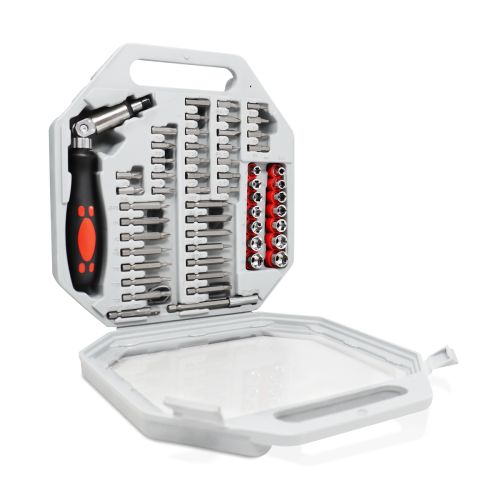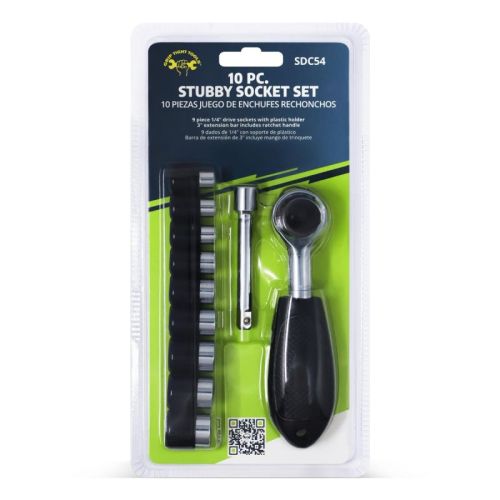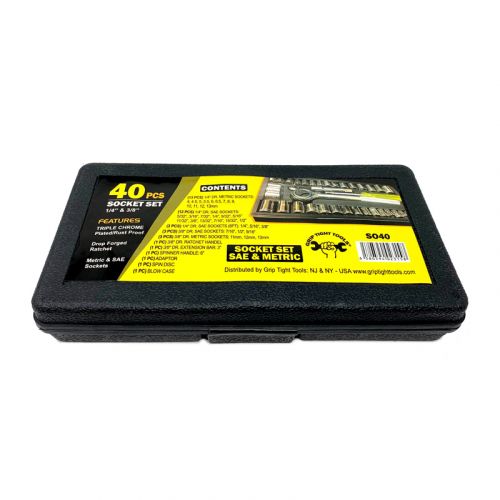FREE SHIPPING ON ORDERS $35+ (Excludes Bulky Items)
Socket & Driver Sets
SOCKET SETS FAQ's
What is a Socket Set?
A socket set is an adaptable and practical collection of toolkit accessories that enables users to work with a variety of sizes and types of fasteners, with a primary focus on fitting a wide range of nuts and bolts. Typically, socket sets come in a single practical container, box, or bag with a variety of replaceable attachments.
Types of Socket Sets
- Deep socket sets: These have longer sockets that can reach bolts that are buried inside machinery or protruding from surfaces. They are usually needed to tackle tire lug nuts or other hard-to-reach fasteners.
- Imperial socket sets: These have sockets that measure in inches and are used for fasteners that have imperial units. They are common in older vehicles or machinery that use imperial standards.
- Impact socket sets: These have sockets that are made of thicker and stronger materials and are used with impact wrenches or drivers. They can withstand high torque and force without breaking or deforming.
- Hex socket sets: These have sockets that have a hexagonal shape and are used for fasteners that have a hexagonal recess. They are also known as Allen sockets or wrenches and are common in furniture assembly or bicycle repair.
- 12-point socket sets: These have sockets that have 12 points or corners and are used for fasteners that have either 6-point or 12-point heads. They offer more flexibility and convenience than 6-point sockets, but less grip and torque.
How to use Socket Set?
To use a socket set, you need to follow these steps:
- Choose the right size and type of socket for the fastener you want to tighten or loosen. Socket sets usually have different sizes and types of sockets that can fit different sizes and types of fasteners. Check the size and shape of the fastener head and match it with the socket that fits snugly over it.
- Attach the socket to a handle or a power tool that has a compatible drive square. Socket sets usually have different drive squares that correspond to the size of the sockets. Make sure the socket and the handle or power tool have the same drive square size. Snap the socket onto the drive square until you hear a click.
- Adjust the turning direction of the handle or power tool if needed. Most handles or power tools have a lever or a switch that can change the turning direction from clockwise to counterclockwise or vice versa. To tighten a fastener, turn it clockwise. To loosen a fastener, turn it counterclockwise.
- Place the socket over the fastener and make sure it is aligned and secure. The socket should cover the entire head of the fastener and not slip or wobble.
- Turn the handle or power tool and apply steady pressure. Move the handle or power tool in the direction you want to turn the fastener. If you are using a handle, you may need to release and reposition it several times to complete a full turn.
- Remove the socket from the handle or power tool and inspect the fastener. Press a button or lever on the handle or power tool to release the socket from the drive square. Check if the fastener is tightened or loosened enough.
Some tips for using a socket set are:
- Use an extension bar to reach fasteners that are deep inside machinery or hard-to-reach places. Extension bars are long metal rods that can be attached between the socket and the handle or power tool to extend their reach.
- Use a universal joint to access fasteners that are at an angle or not aligned with the handle or power tool. Universal joints are flexible joints that can bend up to 90 degrees and allow the socket to rotate in any direction.
- Use an adaptor to connect sockets and handles or power tools that have different drive square sizes. Adaptors are small metal pieces that can change the size of the drive square from larger to smaller or vice versa.



